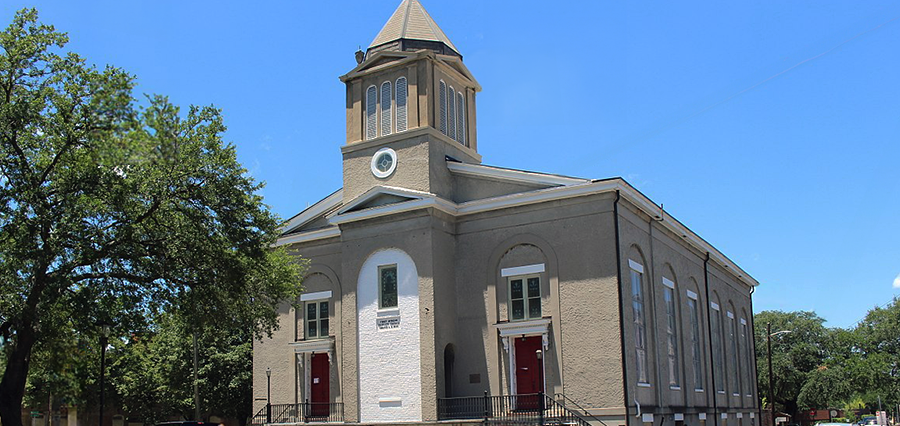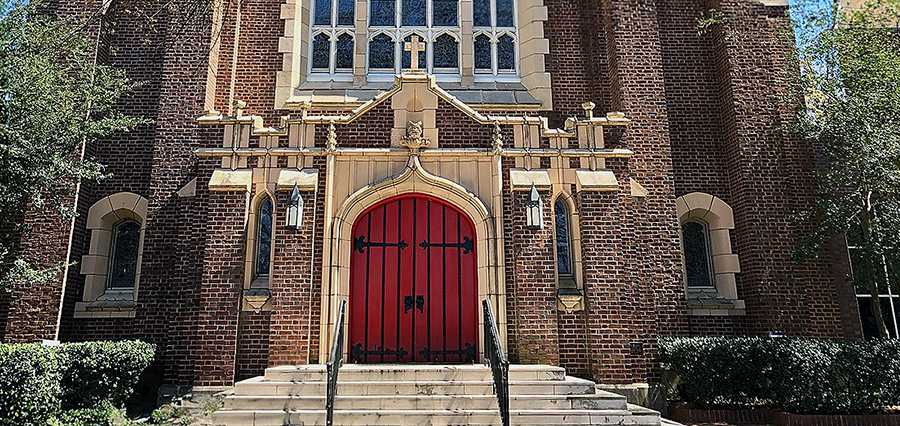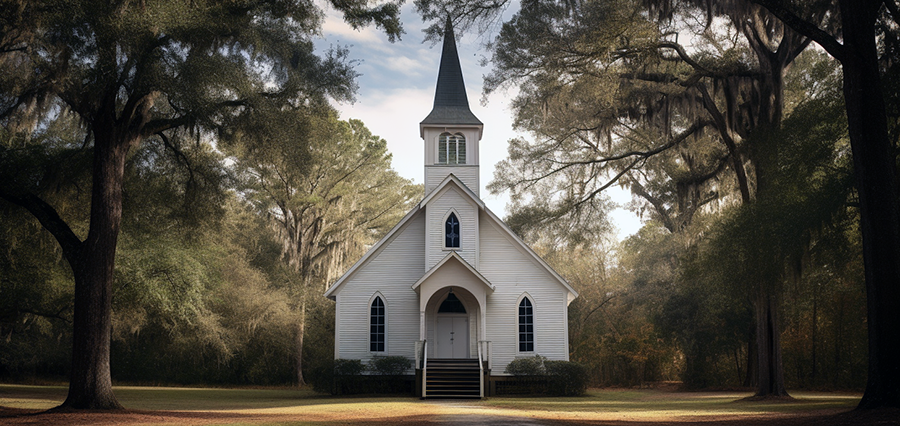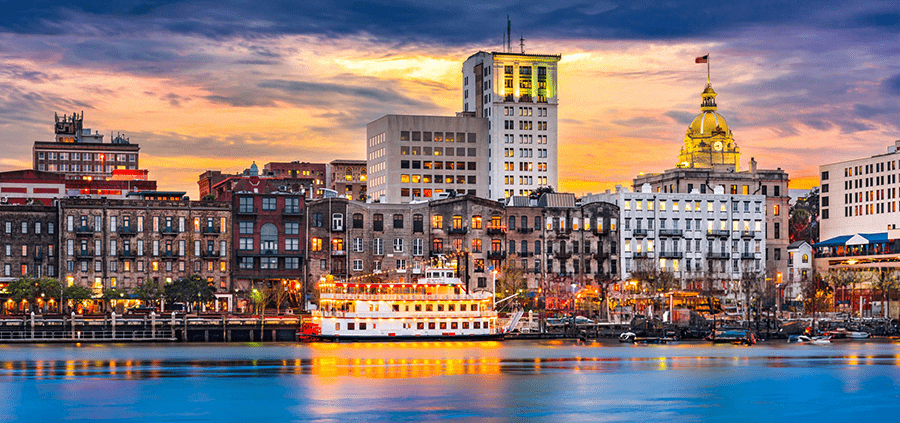Georgia, the Peach State, has a narrative intertwined with a rich religious and architectural tradition. Its history, replete with stories of struggle and triumph, is encapsulated in the hallowed halls of its ancient churches. From the rustic countryside to bustling city centers, churches like St. Luke’s Episcopal Church and Christ Church, Savannah, stand as silent witnesses to Georgia’s unfolding saga.
The Architectural Grandeur
Georgia’s historic churches are a splendid display of architectural styles spanning Gothic Revival, Romanesque, and Greek Revival. For instance, the Gothic Revival-styled St. John’s Episcopal Church is a testament to Yore’s meticulous craftsmanship, with its pointed arches and elaborate tracery. The Greek Revival aesthetics of Christ Church, Savannah, reflect a different era, showcasing simplicity and elegance through its sturdy columns and pediments.

Churches through the Ages
The architectural journey of churches in Georgia is a mirror of the broader societal transitions. The simplistic log churches of early settlers gradually gave way to grander edifices as the colonies prospered. The shift from purely functional structures to more ornate designs mirrored the state’s burgeoning cultural and economic stature on the national stage.
Notable Historical Churches
Georgia’s religious architectural landscape is dotted with numerous churches, each bearing a distinct signature of historical relevance. Among these, a few stand out for their architectural grandeur, the stories they tell, and the historical epochs they represent.
- First African Baptist Church, Savannah:
- Historical Significance: Established in 1773, the First African Baptist Church is one of the oldest Black congregations in the United States. It was a crucial meeting place for civil rights activists during the 1960s.
- Architectural Uniqueness: The church showcases a blend of Greek Revival and Romanesque architectural styles. The interior holds a beautiful pipe organ, and the floor of the church has a design resembling a tribal symbol, harking back to the African roots of its congregation.
- Community Role: Throughout its history, the church has been a hub for social and religious gatherings, significantly impacting the African-American community in Savannah.
- St. Luke’s Episcopal Church, Atlanta:
- Historical Significance: Constructed in the 1820s, St. Luke’s Episcopal Church is one of Atlanta’s earliest surviving religious structures, offering a window into the city’s colonial past.
- Architectural Uniqueness: The church is a remarkable example of Gothic Revival architecture with its pointed arch windows, ornate wooden tracery, and an imposing spire.
- Community Role: St. Luke’s has always been at the heart of its community, providing spiritual sustenance and engaging in various social outreach programs.
- Christ Church, Savannah:
- Historical Significance: Christ Church, established in 1733, is the mother church of Georgia and was instrumental in forming the Episcopal Diocese of Georgia.
- Architectural Uniqueness: The church exudes Greek Revival style with its sturdy columns, classical pediments, and a simplistic yet elegant facade.
- Community Role: Over the centuries, Christ Church has played a central role in Savannah’s religious and social life, continuously serving its community.
- St. John’s Episcopal Church, Savannah:
- Historical Significance: St. John’s Episcopal Church has witnessed the changing tides of Savannah’s history since its establishment in the 19th century.
- Architectural Uniqueness: It is a quintessential representation of Gothic Revival architecture, boasting beautiful stained-glass windows, pointed arches, and intricate stone carvings.
- Community Role: The church has been a focal point for spiritual, social, and community services, anchoring the local community through various historical periods.
- First Presbyterian Church, Augusta:
- Historical Significance: Established in the early 19th century, it’s one of the oldest churches in Augusta, with a rich Civil War history.
- Architectural Uniqueness: The church is known for its Classic Revival style architecture, featuring impressive columns and a traditional steeple.
- Community Role: It has played a significant role in Augusta’s religious and social spheres, being a center for community engagement and spiritual growth.
Each of these churches, with its architectural splendor and historical narratives, contributes significantly to the rich tapestry of Georgia’s religious and cultural heritage, offering both residents and visitors a chance to traverse the lanes of history while appreciating the enduring spirit of community and faith.

Preservation Efforts
Preservation of these architectural marvels is a testament to Georgia’s respect for its heritage. Various organizations and local communities have rallied to restore and maintain these edifices. However, challenges like funding and modern encroachments are persistent hurdles, though the success stories of restored churches provide hope and a blueprint for future preservation endeavors.
The Living History
These churches are not just relics of the past; they continue to serve as vibrant community centers, linking the past to the present. Their enduring relevance is a testament to their robust construction and the timeless values they represent. Modern-day congregations in these historic churches are a living narrative, embodying the continuous thread of faith and community that runs through Georgia’s history.

Conclusion
The historical churches of Georgia are more than mere architectural entities; they are the resonating echoes of the past, each telling a unique story. As we traverse through these sanctified grounds, we are reminded of the rich tapestry that forms Georgia’s historical and cultural identity. A visit to these churches is a sojourn into the past and a journey through the annals of Georgia’s evolving narrative.




